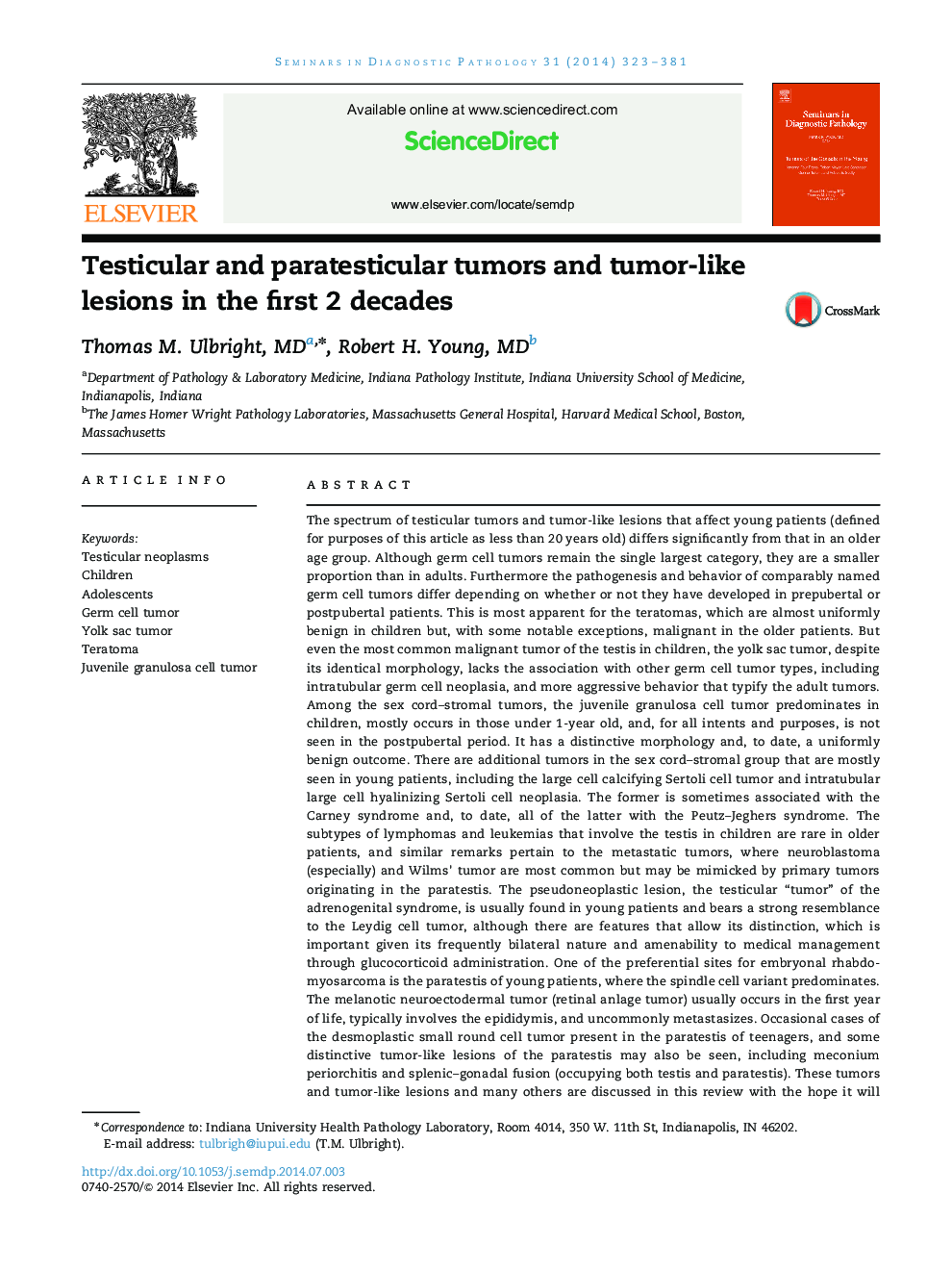| کد مقاله | کد نشریه | سال انتشار | مقاله انگلیسی | نسخه تمام متن |
|---|---|---|---|---|
| 4138335 | 1272141 | 2014 | 59 صفحه PDF | دانلود رایگان |
عنوان انگلیسی مقاله ISI
Testicular and paratesticular tumors and tumor-like lesions in the first 2 decades
ترجمه فارسی عنوان
تومورهای مفصلی و پاراستاتیکولار و ضایعات تومور مانند در 2 دهه اول
دانلود مقاله + سفارش ترجمه
دانلود مقاله ISI انگلیسی
رایگان برای ایرانیان
کلمات کلیدی
نئوپلاسم های مفصلی، فرزندان، نوجوانان، تومور سلول های بنیادی، تومور سیکلت ژله ای، تراتومه، تومور سلول گرانولووس نوجوانان،
موضوعات مرتبط
علوم پزشکی و سلامت
پزشکی و دندانپزشکی
آسیبشناسی و فناوری پزشکی
چکیده انگلیسی
The spectrum of testicular tumors and tumor-like lesions that affect young patients (defined for purposes of this article as less than 20 years old) differs significantly from that in an older age group. Although germ cell tumors remain the single largest category, they are a smaller proportion than in adults. Furthermore the pathogenesis and behavior of comparably named germ cell tumors differ depending on whether or not they have developed in prepubertal or postpubertal patients. This is most apparent for the teratomas, which are almost uniformly benign in children but, with some notable exceptions, malignant in the older patients. But even the most common malignant tumor of the testis in children, the yolk sac tumor, despite its identical morphology, lacks the association with other germ cell tumor types, including intratubular germ cell neoplasia, and more aggressive behavior that typify the adult tumors. Among the sex cord-stromal tumors, the juvenile granulosa cell tumor predominates in children, mostly occurs in those under 1-year old, and, for all intents and purposes, is not seen in the postpubertal period. It has a distinctive morphology and, to date, a uniformly benign outcome. There are additional tumors in the sex cord-stromal group that are mostly seen in young patients, including the large cell calcifying Sertoli cell tumor and intratubular large cell hyalinizing Sertoli cell neoplasia. The former is sometimes associated with the Carney syndrome and, to date, all of the latter with the Peutz-Jeghers syndrome. The subtypes of lymphomas and leukemias that involve the testis in children are rare in older patients, and similar remarks pertain to the metastatic tumors, where neuroblastoma (especially) and Wilms׳ tumor are most common but may be mimicked by primary tumors originating in the paratestis. The pseudoneoplastic lesion, the testicular “tumor” of the adrenogenital syndrome, is usually found in young patients and bears a strong resemblance to the Leydig cell tumor, although there are features that allow its distinction, which is important given its frequently bilateral nature and amenability to medical management through glucocorticoid administration. One of the preferential sites for embryonal rhabdomyosarcoma is the paratestis of young patients, where the spindle cell variant predominates. The melanotic neuroectodermal tumor (retinal anlage tumor) usually occurs in the first year of life, typically involves the epididymis, and uncommonly metastasizes. Occasional cases of the desmoplastic small round cell tumor present in the paratestis of teenagers, and some distinctive tumor-like lesions of the paratestis may also be seen, including meconium periorchitis and splenic-gonadal fusion (occupying both testis and paratestis). These tumors and tumor-like lesions and many others are discussed in this review with the hope it will provide the diagnostic pathologist aid in recognizing the lesions and providing some insight into their clinical significance.
ناشر
Database: Elsevier - ScienceDirect (ساینس دایرکت)
Journal: Seminars in Diagnostic Pathology - Volume 31, Issue 5, September 2014, Pages 323-381
Journal: Seminars in Diagnostic Pathology - Volume 31, Issue 5, September 2014, Pages 323-381
نویسندگان
Thomas M. MD, Robert H. MD,
